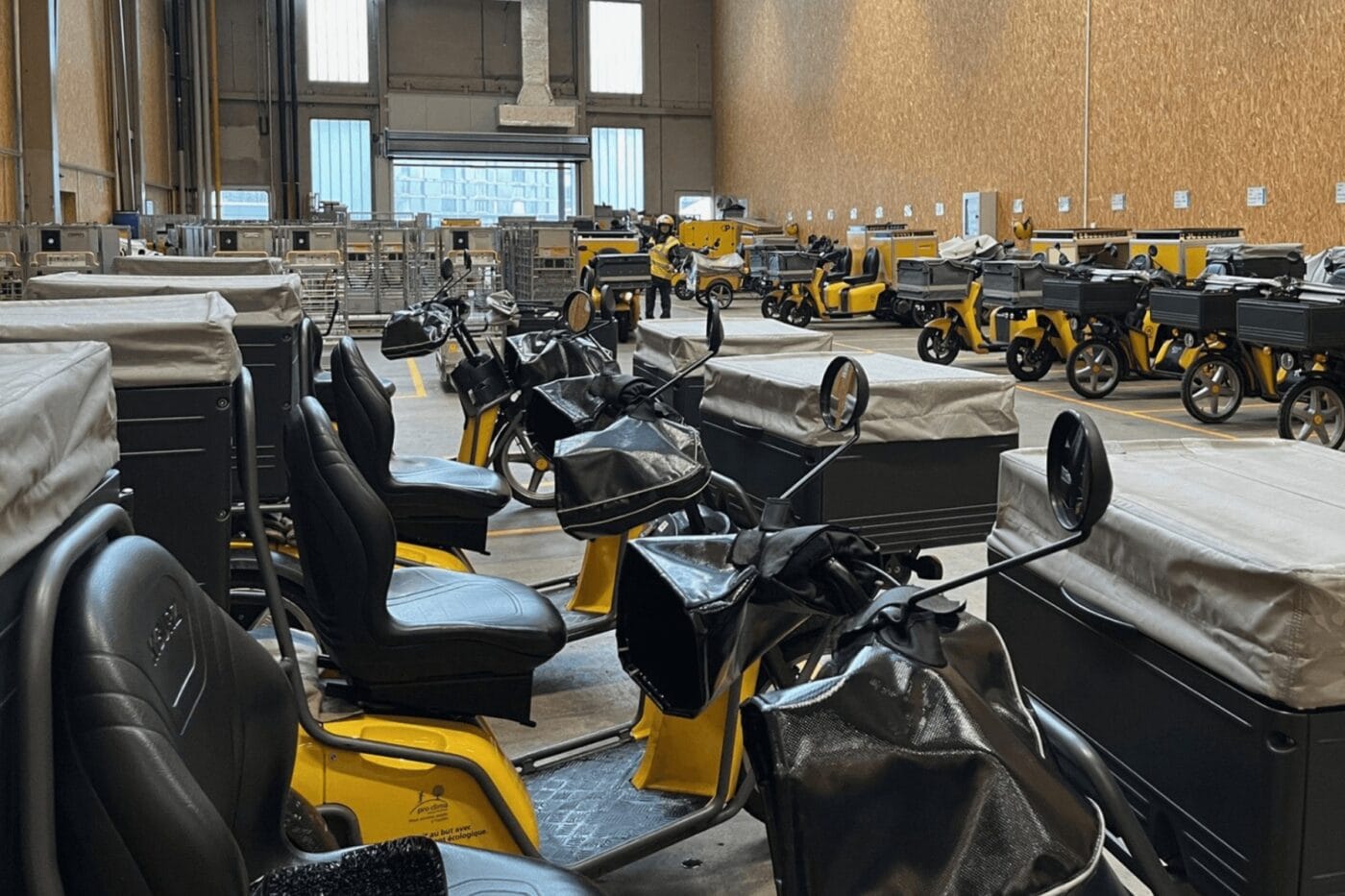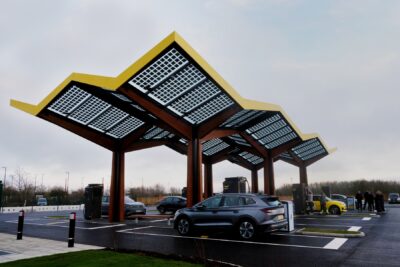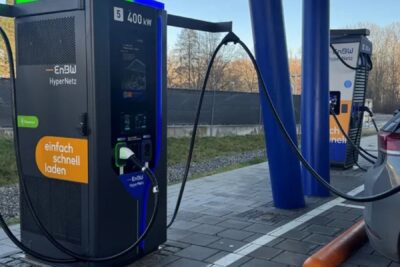Swiss Post begins V2G pilot project with light electric vehicles
The Swiss vehicle-to-grid (V2G) charging project will use bidirectional charging so that postal service fleets can charge when renewable energy input in the grid is high and feed energy back into the grid when electricity demand is high.
Project partners are Kyburz Switzerland AG, Swiss Post and the Lucerne University of Applied Sciences and Arts (HSLU), Institute of Electrical Engineering. The Federal Office of Energy’s (SFOE) pilot and demonstration programme (P+D) is providing financial support for the project.
The key innovation here, say the partners, is that an alternating current (AC) charging process is used, and this is converted into direct current (DC) using on-board devices in the vehicle.
“As soon as the scooters arrive at the depot in the early afternoon, we calculate the charging and discharging profiles in accordance with the Groupe-e variable tariff in order to get the most out of the vehicles in supporting the electricity grid,” says Severin Nowak from HSLU.
The opportunity to earn additional income for an organisation that operates so many electric vehicles should be significant. Electric vehicle fleets in logistics operations of this kind should be ideal for grid operators because they are more easily coordinated and follow regular schedules, as opposed to private car owners, for example, who charge and drive as their individual lifestyles and transport needs require.
The regulations for dynamic charging with electric vehicles to support grids are not yet fully developed across Europe. Grid operators need to offer financial incentives in the form of dynamic tariffs for electric vehicle operators to utilise their vehicle batteries as energy storage devices. This means that grid operators can absorb more renewable energy into the grid when electricity is abundant (for example, when the sun shines or the wind blows and/or demand is low) at a low cost, and feed it back into the grid when electricity is high (for example, in the evenings when people are home and cooking) at a higher rate presenting a profit scenario for the vehicle operator for their efforts.
In Switzerland, dynamic tariffs are not yet widely available, which is why feeding back into the system is not economically viable everywhere across the country. In the Groupe-e network area where the project will be conducted, variable tariffs are already established.
“With the project in Fribourg, the participants want to find out whether the economies of scale from the large number of scooters would be large enough for Swiss Post to earn money with the help of arbitrage,” says Michael Graf, who represents Swiss Post in the project.
The pilot project should enable the partners to establish just how much support can be given to the grid and how much monetary benefit can be gained from the fleet operators in exchange.
Beyond regulatory and tariff frameworks and financial incentives, the project will focus on the technical feasibility of bidirectional charging with alternating current (AC). During the project, the light electric delivery vehicles are to continue their routes as usual to identify periods when bidirectional charging can take place. For this to happen, vehicles are managed using the back-end system from Kyburz Switzerland AG, and the Lucerne University of Applied Sciences and Arts’ charging and discharging algorithms are directly coordinated with the applicable Groupe-e rates.
Berlin-based company Swobbee is already using its battery swapping stations with smart charging for light electric vehicles in delivery and logistics operations. The company serves numerous micromobility companies in Europe and North America using swappable batteries. While Swobbee currently only uses smart charging with its swapping stations (charging when electricity input is high and demand is low), the company aims to use its stations with V2G technology in the future. This means, batteries in the swapping station can eventually, with V2G technology, form a larger virtual power plant.
The advantage of using battery swapping stations for V2G applications (whereby the Swiss Post project is using each battery within the vehicle), is that each vehicle does not need to be equipped with bidirectional charging capabilities, and the lifecycle of the batteries and optimal retirement for recycling can be constantly monitored without vehicle users having to concern themselves. Another advantage is that the delivery vehicles do not need any downtime at all, with drivers or riders simply swapping out their battery and riding off, while the battery left behind becomes part of a virtual power station.
Swiss Post is already highly engaged in the decarbonisation of its transport fleets. In Zurich and Bern, postal operations are already entirely electric, operating entirely without fossil fuels.





0 Comments